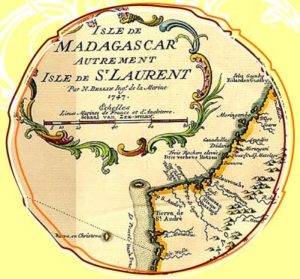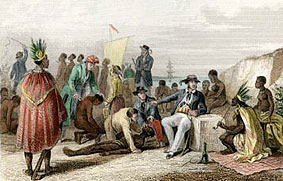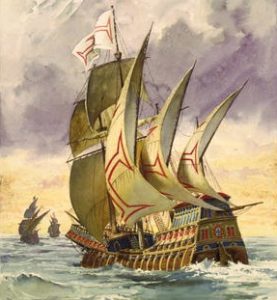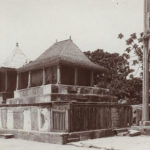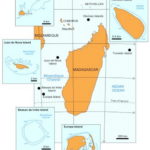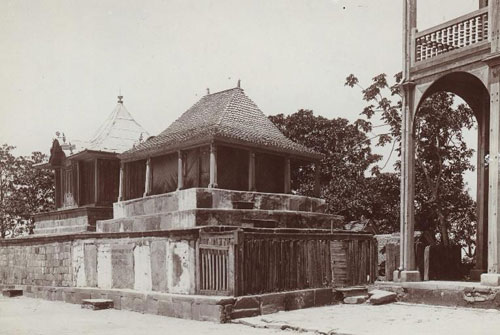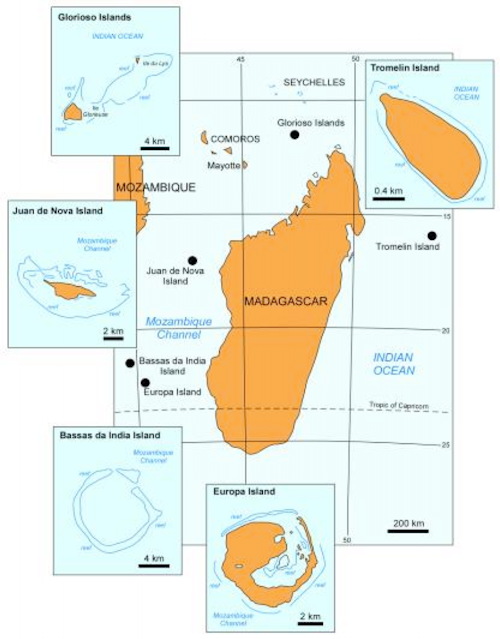Early history and settlement of Madagascar
Madagascar as an independent island is already split off from the mainland for several million yearsFrom the African mainland the island separated already 150 million years ago and also the separation from the Indian subcontinent took place already about 90 million years ago. Due to this isolated position on the world map Madagascar remained untouched and undiscovered by man for many millennia. This is also the reason why Madagascar today has a Variety of unique and one-of-a-kind creatures can be discovered. When exactly the first people arrived on the island can no longer be fully reconstructed today, since only a few written testimonies or similar from that time exist. The first settlement phase that can actually be traced is in the seventh century after Christ when the Arabs took the continent for themselves on a large scale. These first settlers were slave traders and brought accordingly very many people from very different ethnic groups with them to the island. In particular, African ethnic groups such as the Bantu were increasingly on board the ships with which the settlers crossed to Madagascar. This is one of the reasons why in Madagascar today there are still such many different ethnicities and ethnic groups with a completely different background. If the Malagasy themselves and the traditions of the ethnic groups living there today are anything to go by, then the so-called Vazimba the first settlers to take Madagascar for themselves. According to tradition, they were a rather small people with light skin. However, the place of origin of the Vazimba is unknown.
Even today, the Vazimba are accordingly considered to be the ancestors of the people living in Madagascar today. 18 different and indigenous ethnic groups can be identified on the island today. Among these groups there are also many who call themselves direct descendants or relatives of the Vazimba. The gravesites of this mysterious indigenous people can still be seen today on the banks of the Manambolo River. Basically, you have the possibility to visit these gravesites on a Journey through Madagascar However, there are many different rules of conduct that you should know in advance. We will not only help you to create an itinerary, but of course we will also inform you about all the important rules of conduct at different stops on this trip through Madagascar.
The Asian settlement
Even before the landing of the Arab slave traders on Madagascar, according to the reports of various researchers, there have been an Asian settlement of the island given. This phase began between the second and the fifth century after Christ and probably took place within the framework of the so-called Austronesian expansion. In all likelihood, the settlers came from Southeast Asia and probably reached Madagascar by sea without a prior stopover in Africa. The Austronesian expansion ensured that many islands were discovered and conquered by the Asian settlers. Among them were the Malay Archipelago, Hawaii and the Pacific islands up to Rapa Nui.
The African settlement
A major influence on the Development of the island of Madagascar and its population was primarily due to the African wave of colonization, in addition to the Asian wave. This arises simply because of the proximity of the island to the African mainland. The settlement by the Arabs mentioned in the introduction to this text, as well as their companions held as slaves, began in the 7th century and takes place across the Strait of Mozambique. In particular, people from the Bantu people had a pioneering role in this respect. With regard to archaeological findings, the records of the Arabs, who recorded their own settlement of the island in writing and, in parallel, also provided information about the settlement by the Bantu, are of great importance. Archaeologists today assume that African tribes settled the island only in the tenth century. In particular, excavations on the northwest coast of Madagascar near Mahilaka confirm this theory. The settlement of the island of Madagascar by the Arabs in the 7th century is now considered certain from a scientific point of view. At that time, the Arab sailors were much in the northwestern sea near Madagascar, because the island of Unguja, which is now known as Zanzibar, belonged to the Emirates of Oman. Also can be First settlements and permanent establishments on the west coast of Madagascar relatively precisely. The Arabs, however, were not only intent on bringing slaves from various countries of origin to the island, but were also, in all likelihood, there Self-resident or at least passed on their enormous knowledge and many cultural aspects. Thus, even today on the west coast of the country you can find the Antaimoro peoplewho live as Muslims and are known for the production of high quality paper. In addition, the Antaimoro have a so-called sacred script called Sorabe. This script is composed of Arabic characters and Malagasy words, is used mainly by astrologers and healers and is accordingly a clear sign of the influence of Arab settlement.
Also in the Malagasy language can still be found today numerous testimonies of the Arab settlement discover. In particular, the designations for the months and the days of the week can clearly be traced back to an Arabic word origin from a linguistic point of view. Another relic from this bygone era that is still clearly noticeable today are the so-called Ombiasy. These are Healers and medicine menTheir activities are still quite unknown today. What is certain, however, is that the Ombiasy not only devote their activities to healing people, but that they also produce poisons. Here, too, the Arab influence can consequently still be clearly detected today.
The European settlement
The European settlement of Madagascar initiated a new phase as well as a strongly changing age on the island of Madagascar. Even today, many traces of that time can be discovered on the island. For youre trip to Madagascar or your vacation in Madagascar could go to numerous stations that are of great interest from a historical point of view. Feel free to contact us.
The Portuguese
The European colonization of Madagascar basically began with a breakthrough invention to Beginning of the 15th century in Portugal. There, a Portuguese navigator named Henry the Navigator succeeded in developing a new type of ship: the caravel. The special advantage of this type of ship was the construction of the sails, which were developed based on Arabian models. These allowed the sailors in the future also cross against the wind - a project that was absolutely necessary for covering certain distances, but which had not been possible, or only possible to a limited extent, with the previous types of ship. In addition to the development of this new type of ship, at about the same time there were also Significant improvements in the areas of navigation and cartography. This made it possible for the Portuguese to travel much further distances and to discover not only the surroundings on their doorstep, but the whole world at once. In the course of these developments the Portuguese arrived in Madagascar and landed there as conquerors, adventurers, pirates and explorers alike. In fact, it was a captain named Diego Diaz who was the first European to see the island of Madagascar. At least as far as evidence of this encounter exists. Diego Diaz and his ship were originally part of a fleet of Pedro Alvarez de Chabral, who set out in 1500 with a total of thirteen ships to explore the island of Madagascar, which had been discovered a few years earlier by Vasco da Gama. Sea route to India to secure. However, a strong storm tore the fleet in two and Diego Diaz and his ship were separated from the others. When he caught sight of the island of Madagascar and realized that it was not yet marked on his maps, he baptizes it with the name of St. Laurentius.
Only a few years later, in 1504, landed some Castaways from Portugal in Fort Dauphin. Despite the still quite adverse living conditions on the island at that time, the Portuguese managed to survive without help for a good twenty years. Then there was a conflict with the Antanosy people and the stranded were expelled. Another important date is 1506, when the navigator Fernando Suarez discovered the natural harbor of Antsiranana in the north of the island. Even today, in memory of this event, the city is still often called Diego-Suarez designated.
The Dutch
The guest appearance of the Dutch on the island of Madagascar lasted only very briefly. In 1596, Captain Cornelis de Houtman sailed from the Netherlands to Madagascar and docked in Antongil Bay. He wanted to use Madagascar primarily to replenish his supplies there, but showed himself to be anything but diplomatic. He burned down whole villages of the native inhabitants and plundered violently everything that caught his eye. Two years later, Adrimal von Neck landed in the same bay and experienced the extent of the disaster initiated by de Houtman. After the bad experiences, the Madagascans not only showed themselves closed, but fled and took all their belongings with them. Adrimal von Neck was thus unable to replenish his supplies and had to sail on. He then settled on Mauritius and established a Dutch trading company there.
The French
From today's perspective, the French were probably the most important colonialists to settle in Madagascar and even today the influence from that time can be felt in many different areas on the island. The early settlement by the French started in 1642, when they established a base in Fort Dauphin for the first time. The coexistence with the Madagascans living there was initially characterized by mutual respect and responsible interaction. For a good thirty years, the French settlers married the Malagasy women, fathered children, and ensured an ever-stronger fusion. Then, however, there was a turnaround when, in 1672, numerous French women from the homeland also landed on Madagascar. Fourteen settlers separated from their Malagasy wives from the Antanosy people and remarried with the women who had arrived from France. Understandably, the Antanosy people took this as an insult. 13 French wives were killed. Subsequently, the Antanosy decided to lay siege to the French base, which ended only when the people were evacuated from the East Indies by the French trading company. Only 13 of the French were able to leave Madagascar alive. It was not until the later stages of the colonial period that the French would again play an important role in Madagascar.
The British
Besides the French, the Portuguese and the Dutch, the British also had an eye on Madagascar. In 1646, about 200 sailors from Great Britain arrived on the island with the intention of building a fort in Tulear. In doing so, they turned on the native tribes, leading to bitter warfare and a heavy toll in human lives. Unknown tropical diseases also plagued the British settlers. Only twenty British sailors were able to survive the settlement attempt in the end and turned their backs on the island. But this was by no means the end of the British efforts in Madagascar. Again and again ships from Great Britain settled over. The Handel with slaves and various colonial goods flourished on the island, especially under the supervision of the British, but the settlers did not succeed in gaining a long-term and large-scale foothold there. Again and again there were fierce conflicts and the still untamed nature on the island also caused problems for the British. Although acted English in the 19th century for a time even as a second official language on Madagascar, but apart from the pirates, foreign nations from Europe did not succeed in actually taking the island for themselves and settling it extensively until the end of the 18th century

